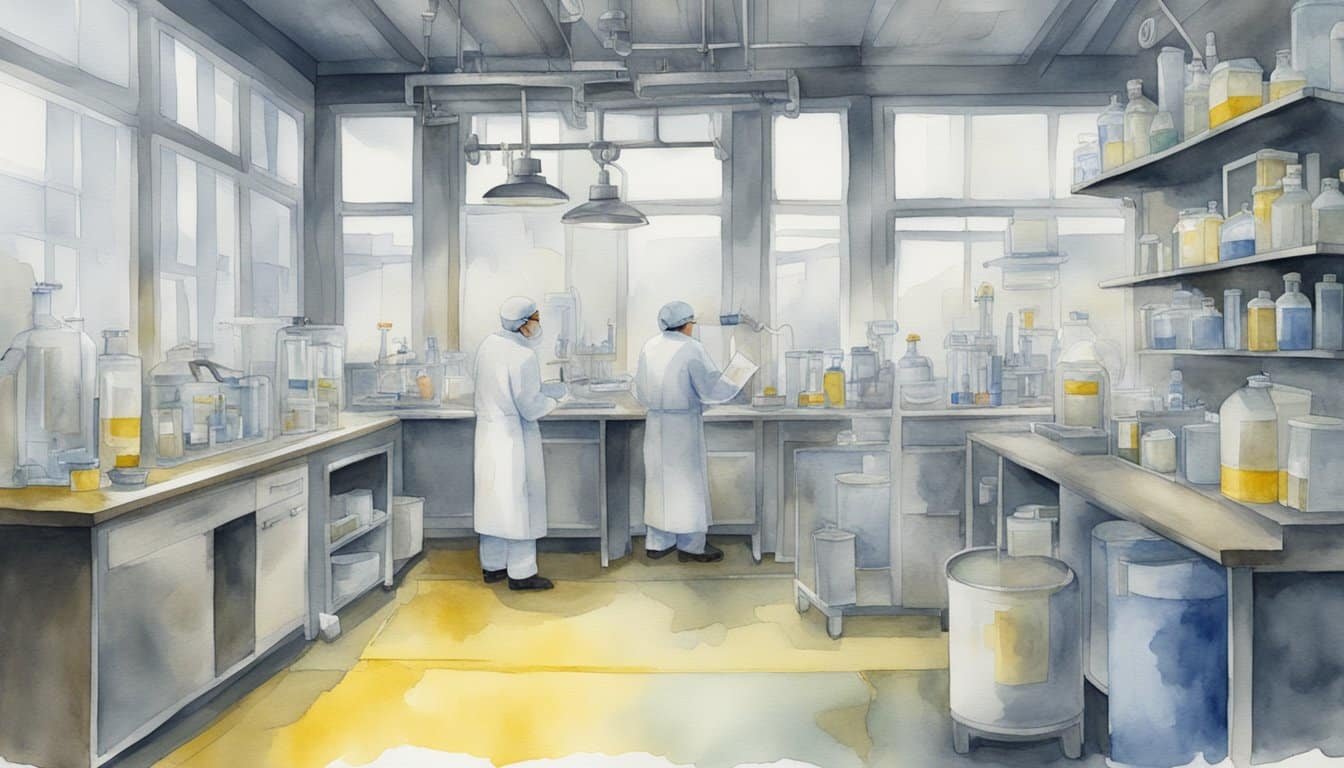Understanding GMOs
Decoding the world of genetically modified organisms involves peeling back layers of science, technology, and agriculture. This section introduces readers to the essentials of what GMOs are, the intricate science behind their creation, and the variety of crops that have been genetically altered.
What Are GMOs?
Genetically modified organisms, or GMOs, are living entities whose genetic material has been altered using genetic engineering techniques. Unlike traditional breeding, which can take generations to achieve desired traits, genetic engineering allows for direct manipulation of an organism’s DNA. This method can insert new genes, delete existing ones, or modify the sequences to produce specific characteristics in plants, such as resistance to pests or tolerance to herbicides.
The Science Behind Genetic Engineering
Genetic engineering is sophisticated; it requires identifying the gene responsible for a desired trait and inserting that gene into the DNA of the target organism. For example, some varieties of GM corn contain a gene from the bacterium Bacillus thuringiensis, which produces a protein toxic to certain pests but safe for human consumption.
Types of Genetically Modified Crops
The palette of genetically modified crops is diverse, with staples like soy, corn (also known as maize), and cotton featuring prominently. GM crops can also include produce like papaya, engineered for virus resistance, or apples altered to prevent browning. Bioengineering in crops aims to enhance yield, durability, and nutritional value, meeting agricultural needs and consumer demands.
Health and Safety Considerations

When one bites into a crisp, engineered apple or scoops up a spoonful of golden rice, one might ponder the consequences these foods have for health and safety. With advances in genetic engineering, food isn’t just about taste; it’s about the nutrients it carries, its impact on allergies, and the regulatory systems in place to ensure its safety.
Nutritional Impact of GMOs
Genetically modified organisms (GMOs), like vitamin A-enriched golden rice, have been introduced to enhance the nutritional content of food and address deficiencies in the global population. Research has been directed towards understanding if these modifications can indeed increase the nutritional value of food without negative health effects, such as toxicity. The aim is to secure food safety while providing additional health benefits.
Allergies and GMOs
The potential for GMOs to cause allergic reactions is a hot topic. While genetic engineering in crops like soy and corn sometimes aims to reduce the prevalence of allergens, concerns remain regarding new proteins in these foods that could trigger unexpected allergies in some individuals. Regulatory bodies like the FDA and the World Health Organization continually assess the allergy risk associated with GMO foods.
Regulatory Landscape and GMO Evaluation
Government agencies, including the FDA and USDA, are charged with the evaluation of GMOs for safety and labeling them accordingly. They oversee the overall food safety of GMOs, including possible impacts on antibiotic resistance and biodiversity, and the use of herbicides such as glyphosate in GMO crops like sugar beets. Both the nutritional and health effects are scrutinized to deliver the information that informs public attitudes and regulatory decisions.
GMOs and The Environment

The symbiosis between GMOs and the environment is intricate, intertwining agricultural practices with the health of the ecosystem. The deployment of genetic engineering carries multiple implications for plants, soil health, and sustainability.
Impact on Agriculture and Food Supply
Genetic engineering technology has revolutionized agriculture by introducing traits like pest resistance and higher yield into crops. For example, Bt corn is engineered to produce a protein toxic to certain pests, thereby reducing the need for chemical pesticides. Additionally, crops like sugar beet and canola have been modified to tolerate herbicides, allowing farmers to control weeds without damaging the crops. These changes aim to increase productivity and stabilize the food supply, even in the face of challenges like droughts and blights.
Sustainability and GMOs
Sustainability in agriculture involves meeting present food needs without compromising future generations. Some GMOs have been designed to grow with less water or to have an enhanced nutritional content, which could contribute to a more efficient use of resources. However, there are concerns about the long-term consequences of using GMOs, such as unintended effects on non-target organisms and potential contamination of traditional crops with foreign genes. Tools like CRISPR offer more precise genetic changes with potentially less impact on the environment, representing the next frontier in bioengineered agriculture.
Controversy and Public Opinion
Public attitudes towards GMO foods are varied and often contentious. While some appreciate the technological strides in increasing food availability and quality, others are skeptical about their safety and impact on biodiversity. The European Union has been particularly cautious, restricting the use of GMOs in food production. Misconceptions and a lack of clear communication have fueled debates, making it vital for science communicators to convey findings in an accessible manner. Issues around GMOs invite a broader discussion on how technology intersects with natural ecosystems and public health.

